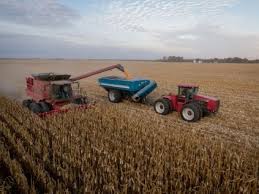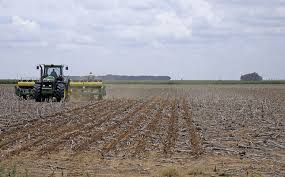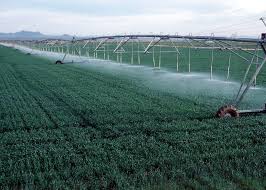Hedging (futures contracts), off-farm employment, and leasing are risk management techniques that farmers employ to mitigate risks on their farms, aiming to reduce income variability and stabilize output.
A primary use of futures involves shifting risk from a firm that desires less risk (the hedger) to a party willing to accept the risk in exchange for an expected profit (the speculator).
Off-farm employment or investment can provide a more certain income stream to the farm household to supplement income from the farming operation. Leasing is a method used to expand control over resources owned by another person through a mutual agreement on rental payments.
Read Also: African Swine Fever: Description, Damages Caused, Control and Preventive Measures
Hedging (Futures Contracts)

A futures contract is an agreement priced and entered on an exchange to trade a commodity or other asset with specified attributes at a specified future time (or, in the case of cash settlement, an equivalent amount of money). Futures contracts provide farmers (as well as processors, merchandisers, and others) with a method for reducing their risks.
While futures contracts were almost exclusively traded on commodity prices in the past, innovations in recent decades have introduced contracts on interest rates, foreign exchange rates, price indexes, and crop yields.
Futures contracts are also available on some inputs used by farmers, especially livestock feeders. Futures contracts introduce additional flexibility into an individual farmer’s marketing responses.
A primary use of futures involves shifting risk from a firm that desires less risk (the hedger) to a party willing to accept the risk in exchange for an expected profit (the speculator).
Hedgers with opposite positions in the market trade with each other, and speculators with opposing views of the market may also trade. Most futures contracts are offset by opposite trades before delivery time, with each party to the transaction selling (or buying) a futures contract that was initially bought (or sold).
Off-Farm Employment
Earning off-farm income is another strategy that farmers may use to mitigate the effects of agricultural risk on farm family household income. Not only can off-farm income supplement household income, but it may also provide a more reliable stream of income than farm returns.
In essence, off-farm income can offer a form of diversification. The incentives for diversifying income sources depend on the level and variability of returns when considering a risk-averse producer.
If farm households are risk-averse, they will be willing to supply relatively more labor to stable off-farm occupations than they would otherwise or may seek out other types of off-farm income (such as interest and dividends) to counter negative fluctuations in farm income.
Read Also: 15 Medicinal Health Benefits Of Comfrey (Symphytum officinale)
Leasing Inputs and Hiring

Producers can also manage their farming risks by either leasing inputs (including land) or hiring workers during harvest or other peak months. Leasing refers to a capital transfer agreement that provides the renter (the actual operator) with control over assets owned by someone else for a given period, using a mutually agreed-upon rental arrangement.
Farmers can lease land, machinery, equipment, or livestock. Leasing is a method used to expand control over resources. In addition, it commits the farmer to regular payments.
Advantages of Leasing
Leasing appears to have several advantages:
i. Control can be gained over long-life inputs (such as land and machinery) without making long-term payment commitments.
ii. Leasing provides producers with flexibility in allocating their asset portfolios a producer can be in either the farming business or the land ownership business without being in both.
iii. Leasing has potential advantages for those who are renting. It improves the renter’s flexibility to respond to changing market conditions.
iv. It reduces the long-term fixed payments on borrowed capital that may strain liquidity in years of reduced output.
v. It reduces both financial and production risk for the renter.
vi. In essence, leasing limits fixed costs, providing greater flexibility for the renter to adapt.
vii. It also offers a way to enter farming or to manage the size of the operation without requiring large investments of capital.
One disadvantage, however, is that renting may limit the short-term borrowing capacity of an operation due to the absence of collateral to back a loan.
Advantages may further accrue from the perspective of the owner. Leasing allows the owner of the asset to receive a return on their investment and may reduce risk when a share rental arrangement is used if the owner is confident of the renter’s management ability. In the case of a cash lease, the owner’s income risk is reduced substantially.
In this article, hedging, off-farm employment, and leasing have been discussed as methods of risk mitigation. Hedging uses futures or options contracts to reduce the risk of adverse price changes prior to an anticipated cash sale or purchase of a commodity.
Incomes from off-farm employment are used to supplement farm incomes, thereby reducing income variability. Hedging, off-farm employment, and leasing are used to mitigate financial risk.
Do you have any questions, suggestions, or contributions? If so, please feel free to use the comment box below to share your thoughts. We also encourage you to kindly share this information with others who might benefit from it. Since we can’t reach everyone at once, we truly appreciate your help in spreading the word. Thank you so much for your support and for sharing!
Read Also: How to Build a Raised Bed Garden
Frequently Asked Questions
We will update this section soon.

